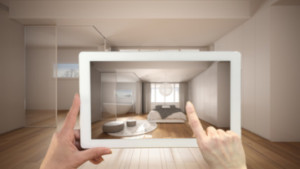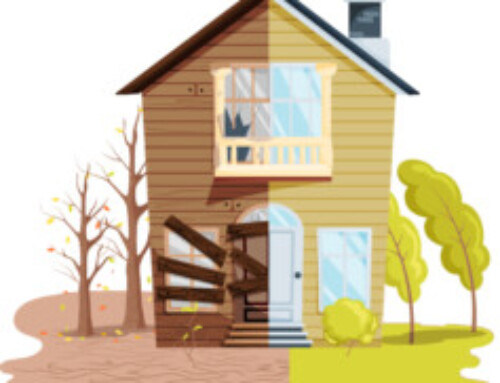 Virtual Reality has changed the game in the real estate world. It’s expected to grow exponentially within the next five years, becoming the primary way we market real estate. The traditional form of home buying and rental shopping consists of figuring out finances, physically touring countless houses, making an offer, applying for mortgages, inspecting the house, getting an appraisal, asking for repairs, and a final walkthrough. On average it takes 5-6 months to find a house and many people don’t have the time or energy for that.
Virtual Reality has changed the game in the real estate world. It’s expected to grow exponentially within the next five years, becoming the primary way we market real estate. The traditional form of home buying and rental shopping consists of figuring out finances, physically touring countless houses, making an offer, applying for mortgages, inspecting the house, getting an appraisal, asking for repairs, and a final walkthrough. On average it takes 5-6 months to find a house and many people don’t have the time or energy for that.
You can shorten the financial side and ease stress by encouraging your clients to get a mortgage pre-approval, but outside of finances, the most time-consuming aspect is viewing the homes. 72% of recent homebuyers report feeling frustrated with their home purchase. In most cases, this is because of frustration with their real estate agent and the lengthy process. No one has found a way to make touring potential homes more efficient, until VR.
Benefits VR Offers
There are several benefits that VR offers, one of them being fewer costs allocated to the home buying process. Viewing properties is time-consuming and taxing, especially when you’re constantly taking off work to travel to look at homes. It’s recommended that buyers look at homes they’re interested in two or three times to make sure it’s a good fit. Oftentimes, people don’t pay attention to details the first time they view a home, so it’s important to give it a second look to find the things you may have missed.
Having to schedule times with the agent and homebuyer to view the home can be just as frustrating. VR allows your client to interact with the property without physically having to be there. The self-guided tour is beneficial since you can visit the property at your own frequency and time. It also helps narrow down the search since you’ll be able to cross off homes that don’t appeal to you online. A VR home search can allow you to see houses back to back for easy comparison and give you the ability to show friends and family for added input.
Immersive Experience
Brands are already leveraging VR for a better customer experience. This will hopefully decrease frustration for home buyers while also accelerating the home search experience for all parties. VR allows you to virtually walk through an accurate depiction of the home since pictures can be deceptive and descriptions can be hard to go by. The virtual tour program will be able to measure out dimensions of the room, window placements, and a better overall layout.
Virtual tours can also be used when your client is building a property. It gives a more accurate portrayal of what you’ll get and will provide the ability to make necessary adjustments before the process begins. This allows your team to get a head start with interior design. It’s a great tool to use when mapping out each room and determining how it will fit into your vision.
Unlimited Customizations
Companies like Amazon already use augmented reality to show how their furniture would look in your home. Staging furniture can influence the appeal of a home viewing. Many home buyers are drawn to homes that are set up nicely and cater to the style of the consumer. Using VR in this instance can help better visualize the home the way the consumer wants and improve the overall appearance and marketing of the property.
One of the main components consumers look for when shopping around for a home is size. VR programs are able to showcase size and dimensions easily. The general walkthrough of the rooms will help the buyer decide if it’s enough space for them. As stated prior, this would help narrow down the search instead of wasting precious time scheduling and viewing a tour in person.
With VR becoming the new reality in real estate, it’s time to consider your options and implement this new program into your practice.




